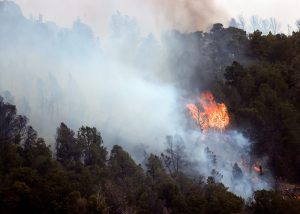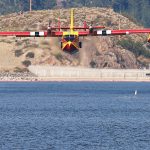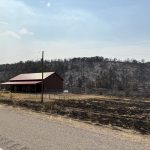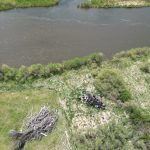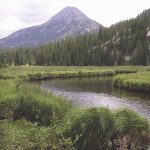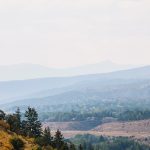Talk for the animals: Eagle County Wildlife Roundtable gives voice to a local population that can’t speak for itself

Eagle County’s wild animals inevitably pay a high price when new development happens.
Because deer, elk and other animals are unable to speak for themselves when projects are presented, a new group of Eagle County residents has organized to formally speak for them.
This week, representatives from the Eagle County Wildlife Roundtable met with the Eagle County Board of Commissioners to present a summary of the work they have completed in the past year. They also presented their vision of how their advocacy can evolve in the future.
Commissioner Matt Scherr said the roundable’s inception came after an informal discussion been himself, Aaron Mayville of the U.S. Forest Service, and Kim Langmaid of Walking Mountains Science Center. That discussion focused on how wildlife concerns are inevitably brought forward when land use issues are debated.
“This just continues to happen. We just keep having these issues. Is there a way we can build this issue into our considerations so that wildlife has a voice and we acknowledge the importance of it,” Scherr said.

Support Local Journalism
Scherr noted that during the past couple of decades, there has been an incremental loss of wildlife habitat as various developments were approved and unconnected mitigation programs were adopted. Over time, the county has been “mitigating into disaster” he said.
“As our wildlife professionals always tell us, mitigation is a net loss,” Scherr said.
But by taking a comprehensive look at wildlife concerns, organizing the various memorandums of understanding regarding mitigation plans and having a formal entity advocating for wildlife during land use review, Scherr said the county could take the proactive step the public has long desired.
“This is really what everyone wants,” Scherr said. “Developers, as well, don’t want to be in the position of being the bad guys affecting wildlife.”
Community values
In jurisdiction after jurisdiction and survey after survey, the local populace supported wildlife protection. The new Eagle County Wildlife Roundtable’s stated purpose is to meet that desire.
“Together we will identify a shared vision and realistic actions to protect regional wildlife, while also ensuring that these actions are supported by the community as a whole. We want to leverage diverse values, creativity, and resources to move toward positive action and enduring solutions to the complex wildlife issues in Eagle County,” reads the group’s stated purpose.
During a year when COVID-19 restrictions complicated everyday work life, members of the roundtable tackled an array of organizational tasks and laid the groundwork for the group’s ongoing mission. Since a kickoff event in February, members split into four working committees:
- Land use planning
- Education/outreach and human/wildlife management
- Habitat management
- Recreation
With help from National Forest Foundation facilitators, the larger group has gathered for 10 session this year and the committee members gathered for one or two meetings a month. The results of those efforts include defined initiatives and goals for each of the committee focus areas.
Land Use
Rick Pylman, a local planner presented the work of the land use group. He noted the committee’s aim is to encourage conscientious land use decisions that minimize negative impacts to wildlife habitat in the valley.
“We would really attempt to do that in a cooperative way using collaborative decision-making,” Pylman said.
This year the committee worked with the Eagle Valley Land Trust to include wildlife questions in the organization’s annual survey and launched a partnership with Colorado Parks and Wildlife and Colorado State University to create an in-depth survey assessing wildlife values in Eagle County.
“It is really important to us, outside of any specific land use process, any specific file that come before the commissioners for example, to be able to really assess some community values for wildlife and communicate those values,” Pylman said.
The group’s future goals include continuing to gather community input regarding wildlife issues and to include wildlife concerns as part of the county’s comprehensive land use rewrite. Ultimately, Pylman said the goal is to include the roundtable as a referral agency for county land use reviews.

Education/Outreach
The Eagle County Wildlife Roundtable effort may already be familiar to members of the community because of this committee’s work. Members have authored columns for the Vail Daily. Additionally, committee members have established a URL and domain name for the roundtable’s work and created an organization logo.
“The roundtable is hoping we will be seen as a well-rounded and well respected and collaborative entity in Eagle County,” said committee representative Rick Spitzer, a well-known local wildlife photographer. “The education committee intends to avoid political and specific controversial issues that may have a perception of bias or partnership.”

Habitat Management
Kristen Bertuglia, roundtable member and environmental sustainability director for the town of Vail, said one of the challenges involved in wildlife habitat projection is the need to identify and assess the landscape of Eagle County. This group’s work is focused on establishing a habitat management database as well as an interactive wildlife map. Scott Flemming of the county’s GIS department tackled that project.
The new Wildlife Interactive Map identifies species, habitat and migration corridors. The goal is to have a final product that can be easily updated and is accessible to the public.
Along with the map, Bertugila said the committee is working to compile the memorandums of understanding approved by various entities in the county to provide a clearinghouse and reference for wildlife-related decisions.
Recreation
As committee representative Ernest Saeger noted, more people are recreating in lands that wildlife traditionally occupy — creating a situation fraught with conflict that cries out for education.
“We want to balance consumptive and non-consumptive recreation with wildlife habitat protection,” he said.
In the long term, Saeger said this work may require a funding source and the committee will study “innovative mechanisms to support wildlife conservation, habitat enhancement and recreation in Eagle County.”
What’s next?
When presented with all the work that has been done to date, the commissioners praised the roundtable’s efforts and asked the group to also reach out to towns and metro district boards to present their mission.
For their part, the commissioners welcomed the idea of having a group dedicated to wildlife advocacy.
“I think we are excited to jump on that,” said Commissioner Kathy Chandler-Henry. “It is always difficult, as someone making land use decisions, to feel like you have a good handle on what will happen with the wildlife, based on the decisions you make.”
“Having a neutral, science-based group out there with recommendations will be very helpful,” she said.


